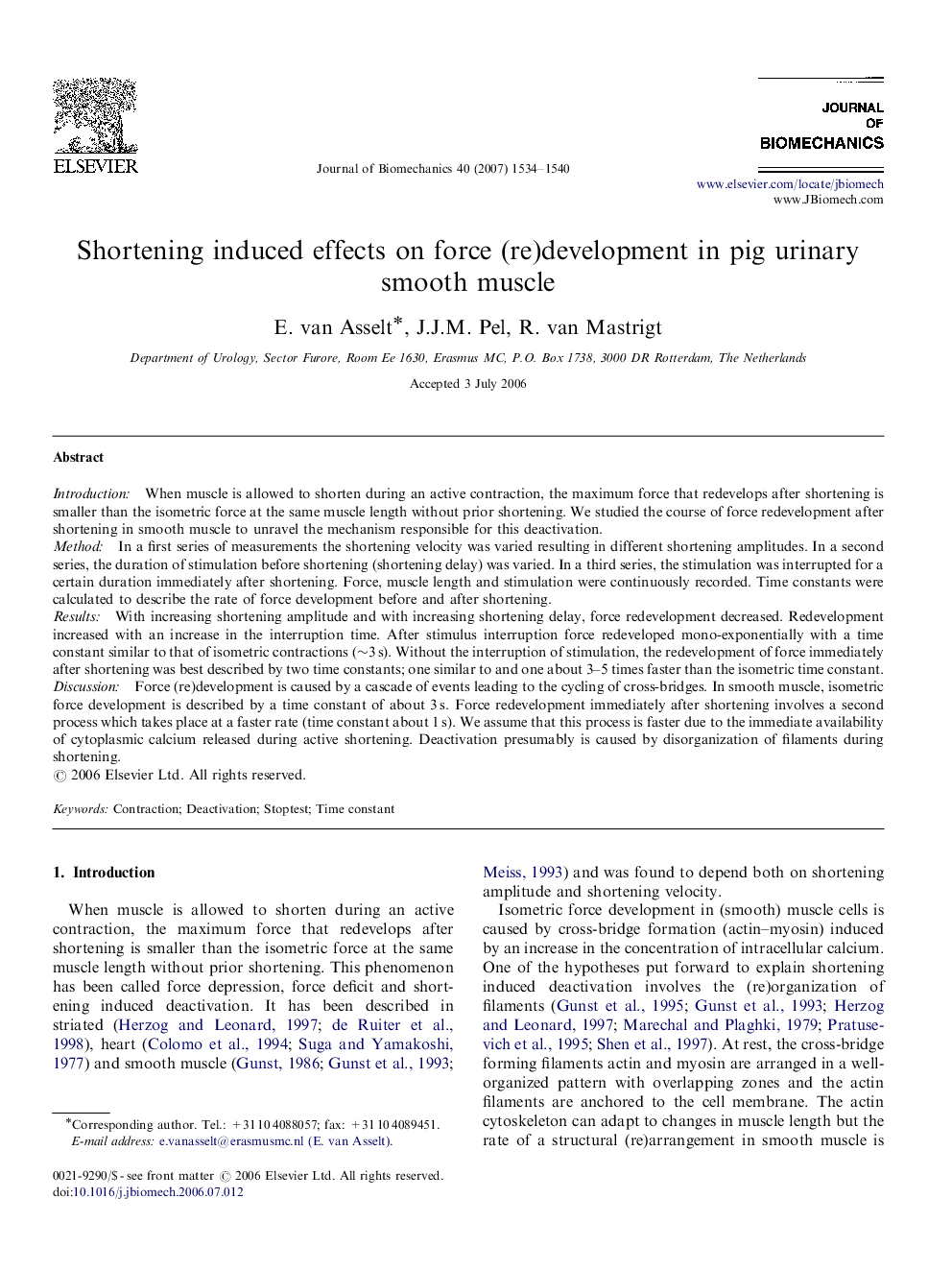| کد مقاله | کد نشریه | سال انتشار | مقاله انگلیسی | نسخه تمام متن |
|---|---|---|---|---|
| 874511 | 910340 | 2007 | 7 صفحه PDF | دانلود رایگان |

IntroductionWhen muscle is allowed to shorten during an active contraction, the maximum force that redevelops after shortening is smaller than the isometric force at the same muscle length without prior shortening. We studied the course of force redevelopment after shortening in smooth muscle to unravel the mechanism responsible for this deactivation.MethodIn a first series of measurements the shortening velocity was varied resulting in different shortening amplitudes. In a second series, the duration of stimulation before shortening (shortening delay) was varied. In a third series, the stimulation was interrupted for a certain duration immediately after shortening. Force, muscle length and stimulation were continuously recorded. Time constants were calculated to describe the rate of force development before and after shortening.ResultsWith increasing shortening amplitude and with increasing shortening delay, force redevelopment decreased. Redevelopment increased with an increase in the interruption time. After stimulus interruption force redeveloped mono-exponentially with a time constant similar to that of isometric contractions (∼3 s). Without the interruption of stimulation, the redevelopment of force immediately after shortening was best described by two time constants; one similar to and one about 3–5 times faster than the isometric time constant.DiscussionForce (re)development is caused by a cascade of events leading to the cycling of cross-bridges. In smooth muscle, isometric force development is described by a time constant of about 3 s. Force redevelopment immediately after shortening involves a second process which takes place at a faster rate (time constant about 1 s). We assume that this process is faster due to the immediate availability of cytoplasmic calcium released during active shortening. Deactivation presumably is caused by disorganization of filaments during shortening.
Journal: Journal of Biomechanics - Volume 40, Issue 7, 2007, Pages 1534–1540